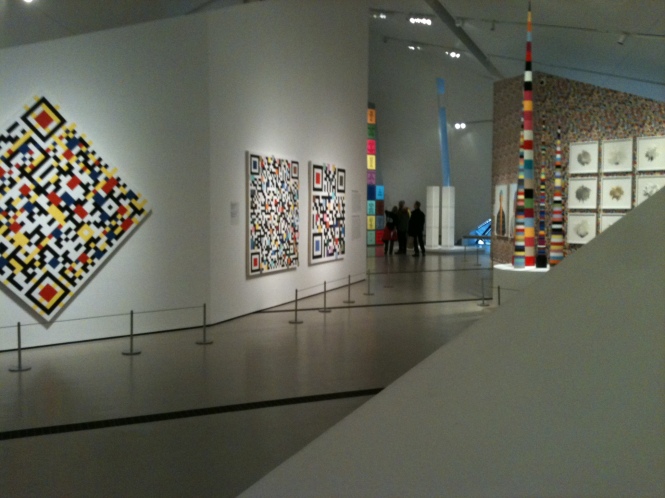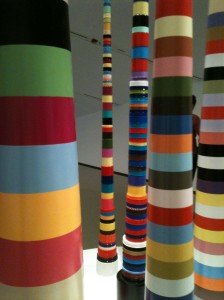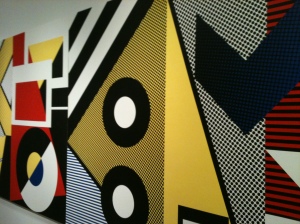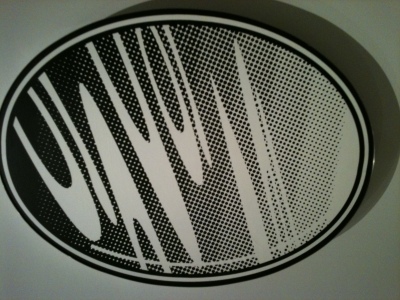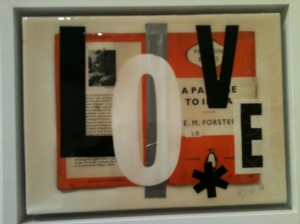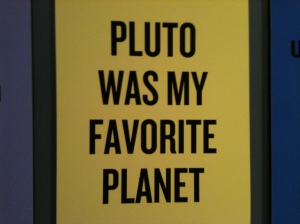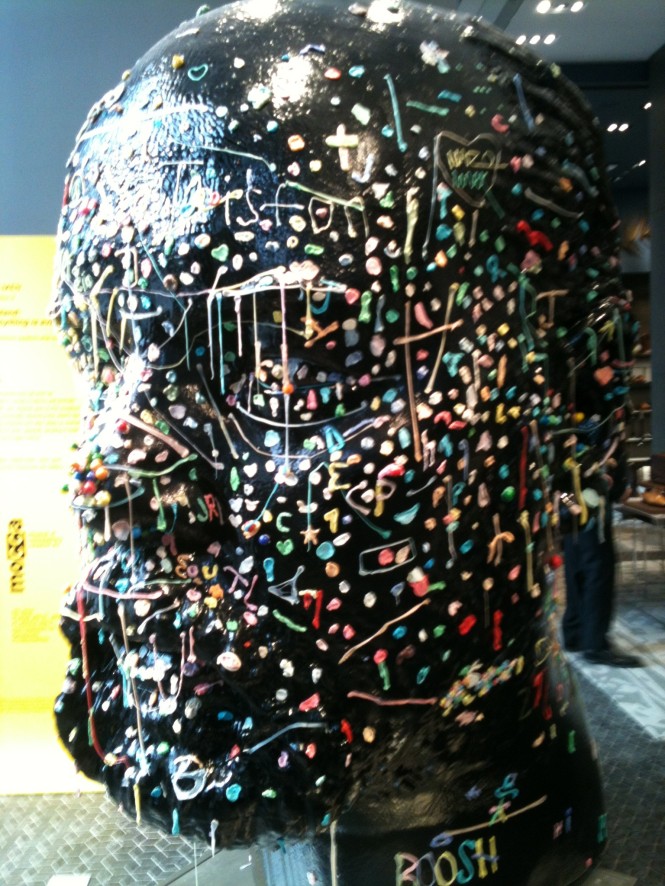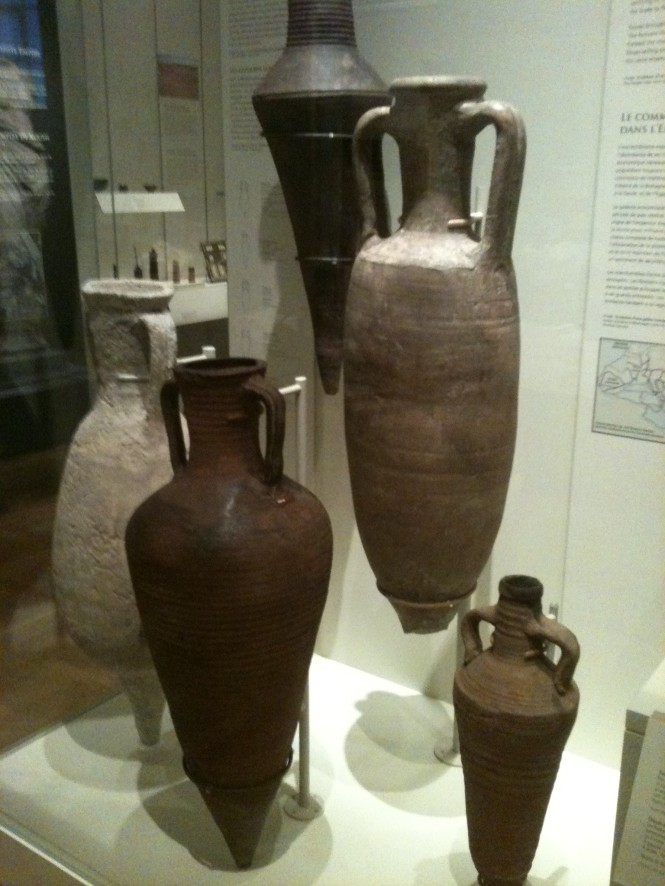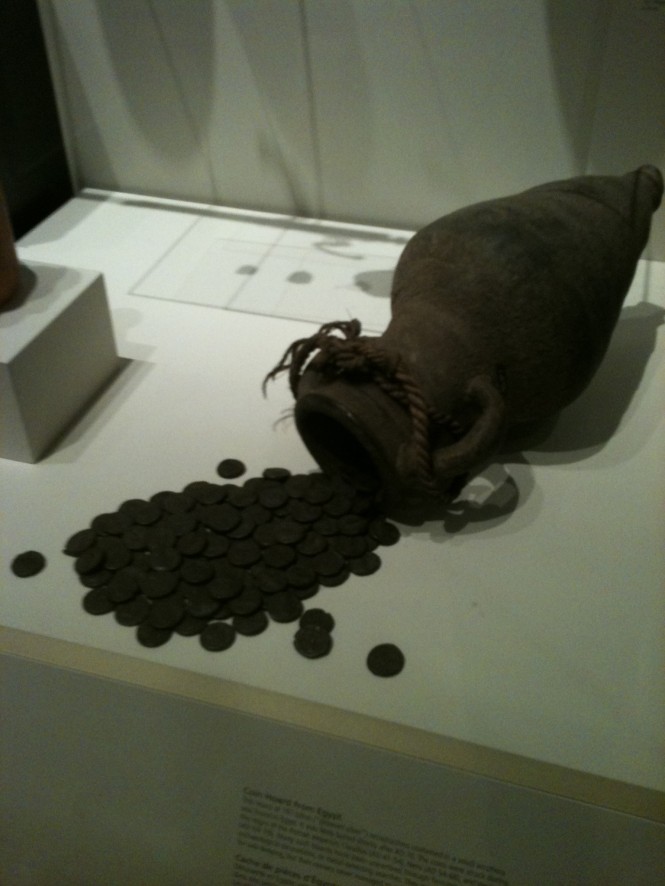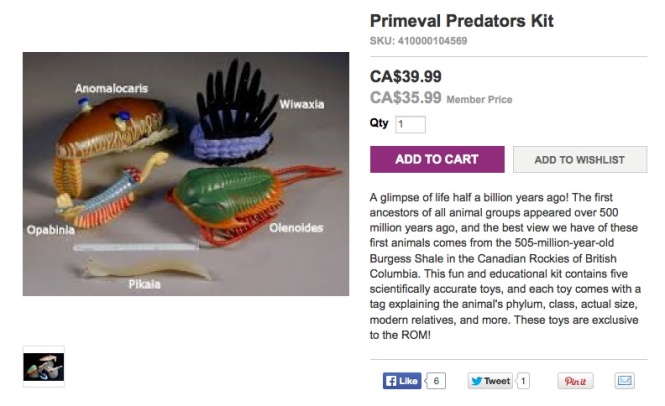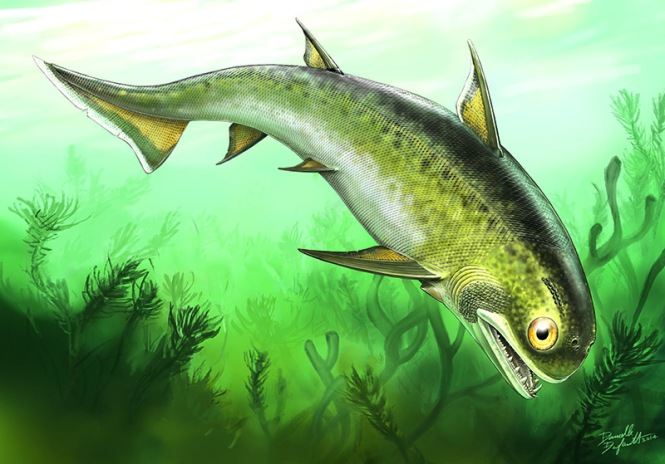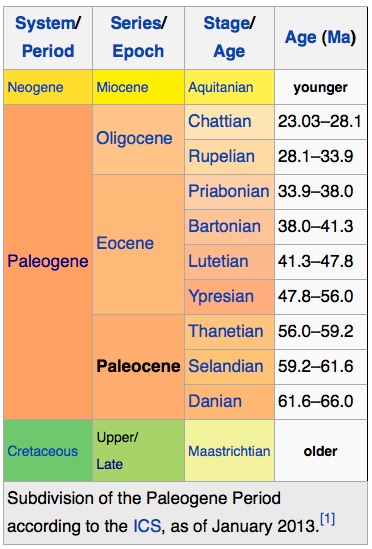How does a museum stay current with what a society values and collects? Many have chosen to imbed a Contemporary Culture gallery within their walls. Recently an exhibit of contemporary art opened that spans two museums and has an on-the-street presence as well.
There was a bit of a Dr. Seuss feel to the exhibit and it was wonderful that the artist/author was encouraging photography of his work. (all photo source : Lorie Pierce)
The street installation was located in the lobby of an upscale men’s clothing store. Named ‘Gumhead’, the artwork is composed of a large ceramic head that visitors are encouraged to cover with chewed gum.
Personally, I added an orange starfish to his cheek. Can you locate it?
